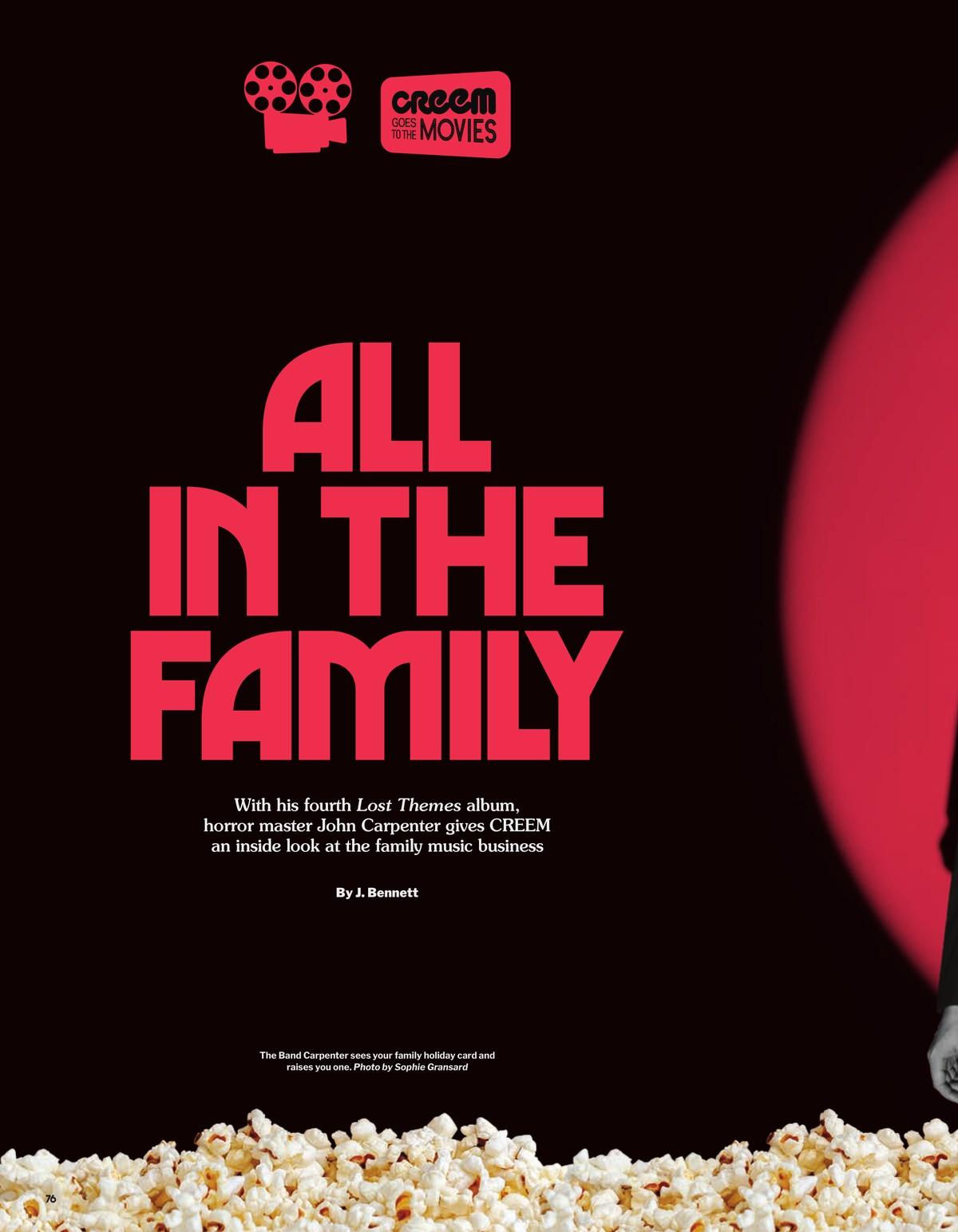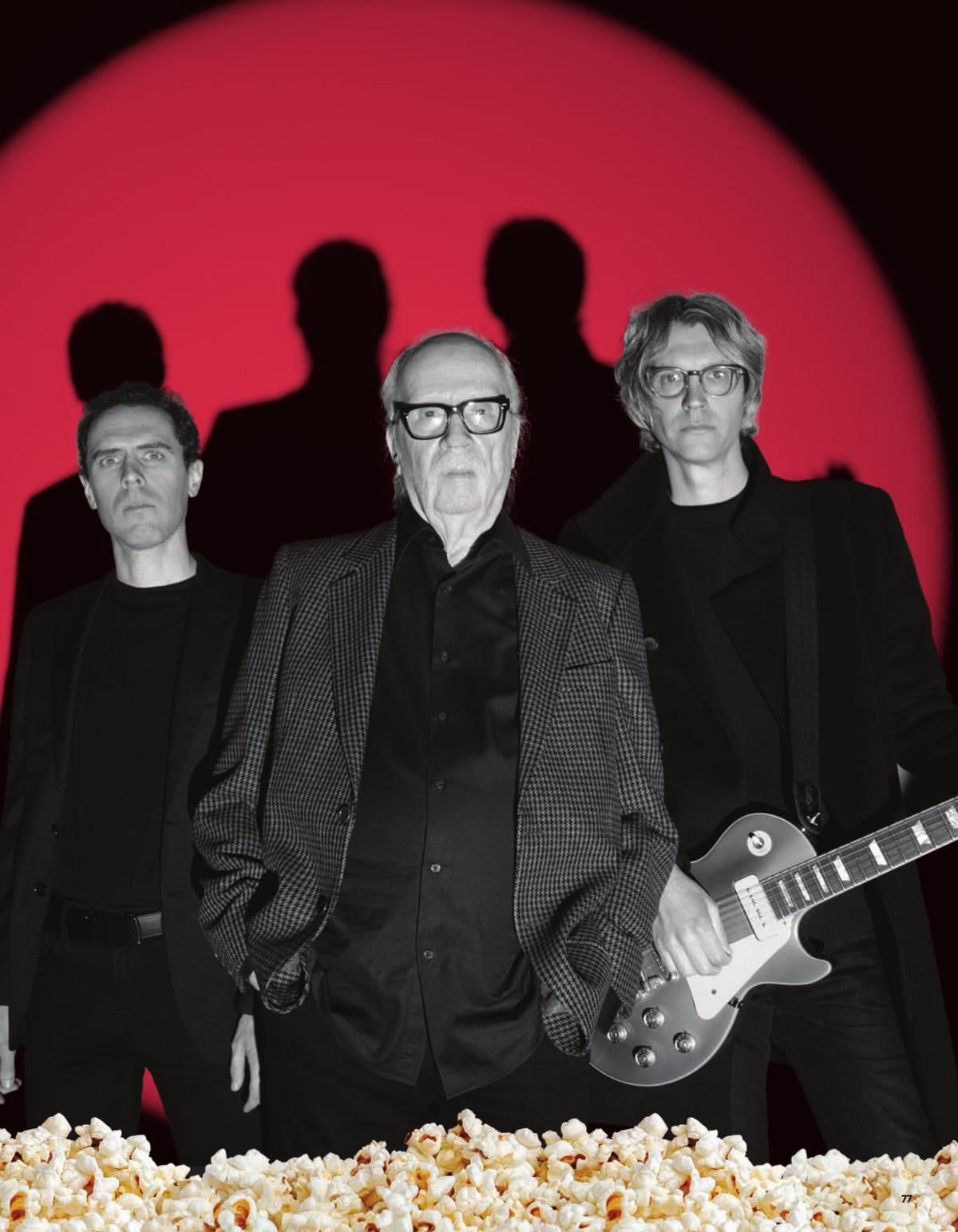ALL IN THE FAMILY
With his fourth Lost Themes album, horror master John Carpenter gives CREEM an inside look at the family music business


"Almost all directors are losers. We’d rather be rock gods.” That’s John Carpenter talking about his second career as a professional musician. “It’s much more fun than directing,” he says. “And you probably get more girls.”
Carpenter is 76 years old and happily married, so we’re pretty sure he’s not trolling for strange. But you can take this to the bank: John Carpenter does not want to talk about his movies. He certainly doesn’t want to watch them. But if you’re a child of the ’70s or ’80s—or anybody who enjoys horror and sci-fi flicks—there’s a good chance that one of Carpenter’s films is among your favorites.
He defined the slasher genre with 1978’s Halloween, simultaneously introducing the world to Jamie Lee Curtis and creating a franchise that spawned 13 films (and possibly more to come). Over the next decade, he directed a trio of flicks that made Kurt Russell a major action star and household name: Escape From New York (1981), The Thing (1982), and Big Trouble in Little China (1986).

